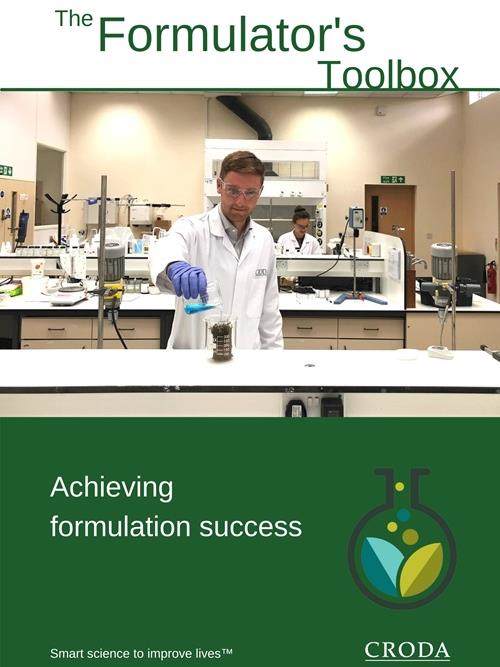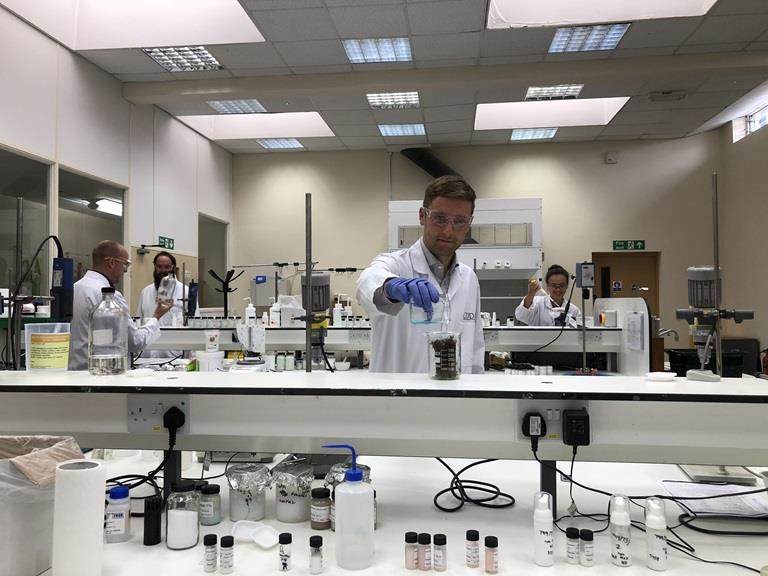
Capsule suspension (CS)
A capsule suspension (CS) formulation is a combination of an active ingredient encapsulated in a polymer shell suspended in water with a dispersant and wetting agent.

CS formulations remain one of the most advanced formulation types for crop protection products worldwide. These are typically next-generation formulations. When CS formulations are diluted with water in the spray tank, they form a spontaneous suspension, with particles in the size range of 0.1 to 20 µm. From a formulation view, the dilute emulsion, when sprayed, allows for a more uniform and accurate application of the active ingredient onto the crop, which is essential for effective pest control. It is possible to use CS formulations to give controlled or delayed release of pesticides as well as provide better protection against toxic active ingredients or prevent degradation of material.
Benefits
- Water-based so good safety and user convenience
- Flexibility in time-controlled or delayed release of active ingredient
- Reduced toxicity
- Reduced degradation of active ingredient
- Good bioefficacy
- Uniform suspension upon dilution
- Safe to handle
- No or low solvent content
Limitations
- Uses expensive and hazardous monomer
- Active ingredient needs to be fully soluble in the solvent over a range of temperatures
- Complex development with limited scope for change to processes
- Possible incompatibility between active ingredient and monomer
- Lower active ingredient content
The Formulator's Toolbox (Full Version)

Products recommended for CS
In the preparation of CS formulations, the emulsification step is important for controlling the size of final capsules. Emulsifiers are required to form suitably small emulsion droplets which can in turn be encapsulated. Along with the emulsifier, a protective colloid is needed in for long term stability. During the emulsification stage they keep the emulsion droplets dispersed away from each other; while after completion of the encapsulation process, they keep encapsulated active particles separated.
In CS formulations, dispersants are required to prevent flocculation and agglomeration of capsules within the formulation. Wetting agents are also required to rapidly move to newly created particle surfaces during the interfacial polymerisation process.

Atlox™ 4913
.jpg&mn=cropcare&w=768&xr=0&yr=0&xfp=6&yfp=6&hash=20085CA4656E3D1606EFFB22F3D81A0819C138999FEC74AA)
Atlas™ G-5000
.jpg&mn=cropcare&w=768&xr=0&yr=0&xfp=6&yfp=6&hash=48717E6EA80954ABD146F117F2CAC16E19C138999FEC74AA)
Atlas™ G-5002L
.jpg&mn=cropcare&w=768&xr=0&yr=0&xfp=6&yfp=6&hash=2DB72ABD5AB1ECC294B3ADDE82DCB7F919C138999FEC74AA)

.jpg&mn=cropcare&w=768&xr=0&yr=0&xfp=6&yfp=6&hash=E5AD947B1F7955ABD7F56C2EBB7B0B1A19C138999FEC74AA)

